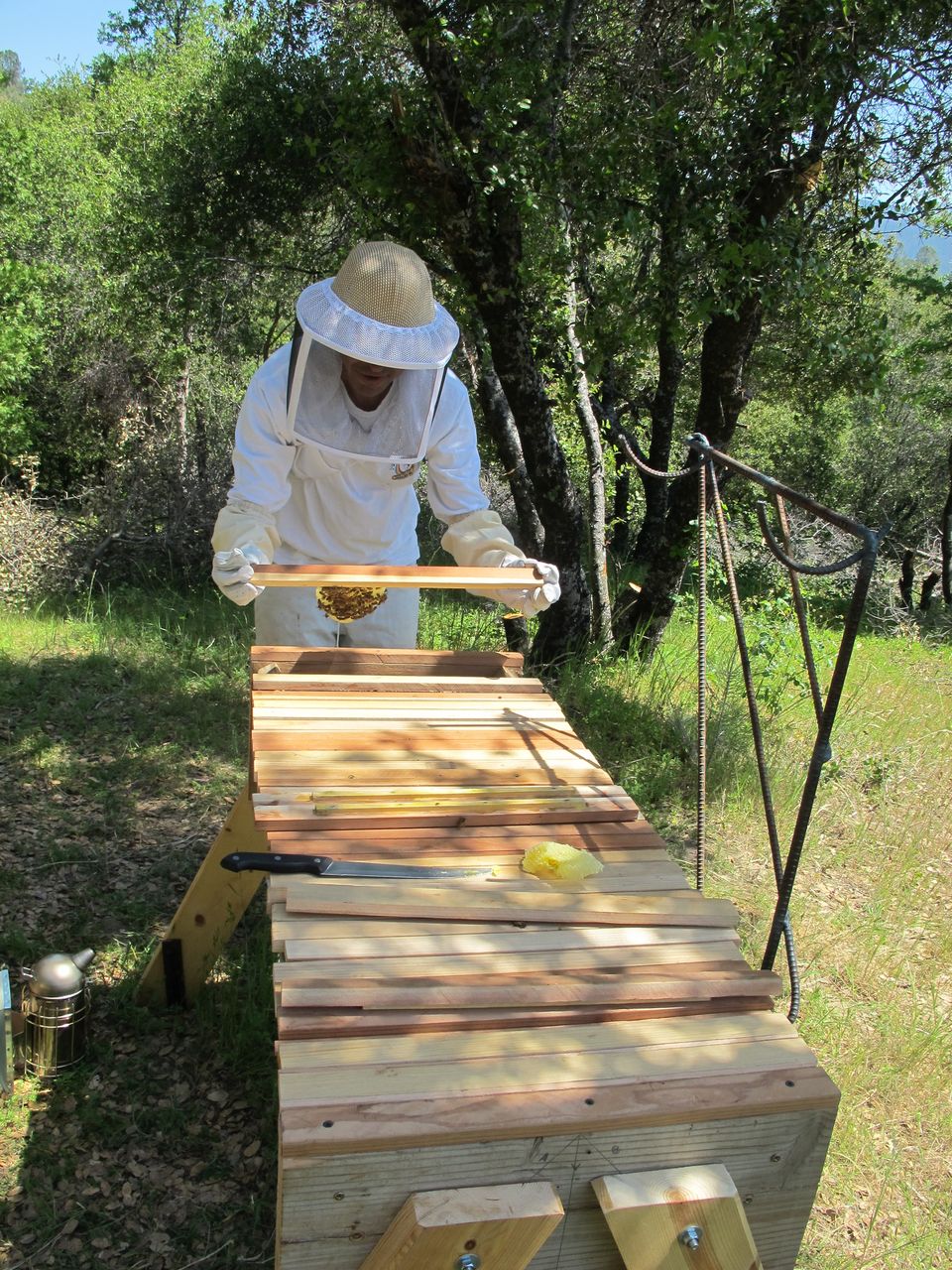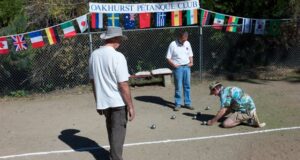OAKHURST – Recently our friend Doug Mendonca decided to build a Kenyan “top-bar” style bee hive. Before ordering bees online, Mendonca practically lived on a diet of YouTube bee-keeping videos in preparation for his precious new arrivals.
The newly minted beekeeper received an initial order for three pounds of honey-makers, which translates to ten or twelve thousand individuals bees.
Once his new hive had a chance to settle for about a week, we walked out into the woods above Oakhurst, listening and taking pictures while Doug explained what was going on. The first thing we wanted to know was, why bees?“As a kid growing up my grandfather had bees and my mother would tell stories of when she was a girl and her father had bees, so I’ve always had bees on the brain,” he explains. It was only a matter of timing.
“I am completely fascinated with how the hive works – the queen, the life cycle of the bees. At this point, honey is the farthest thing from my mind. I just want a colony to raise and to have, but it sure will be great to harvest the honey eventually.”
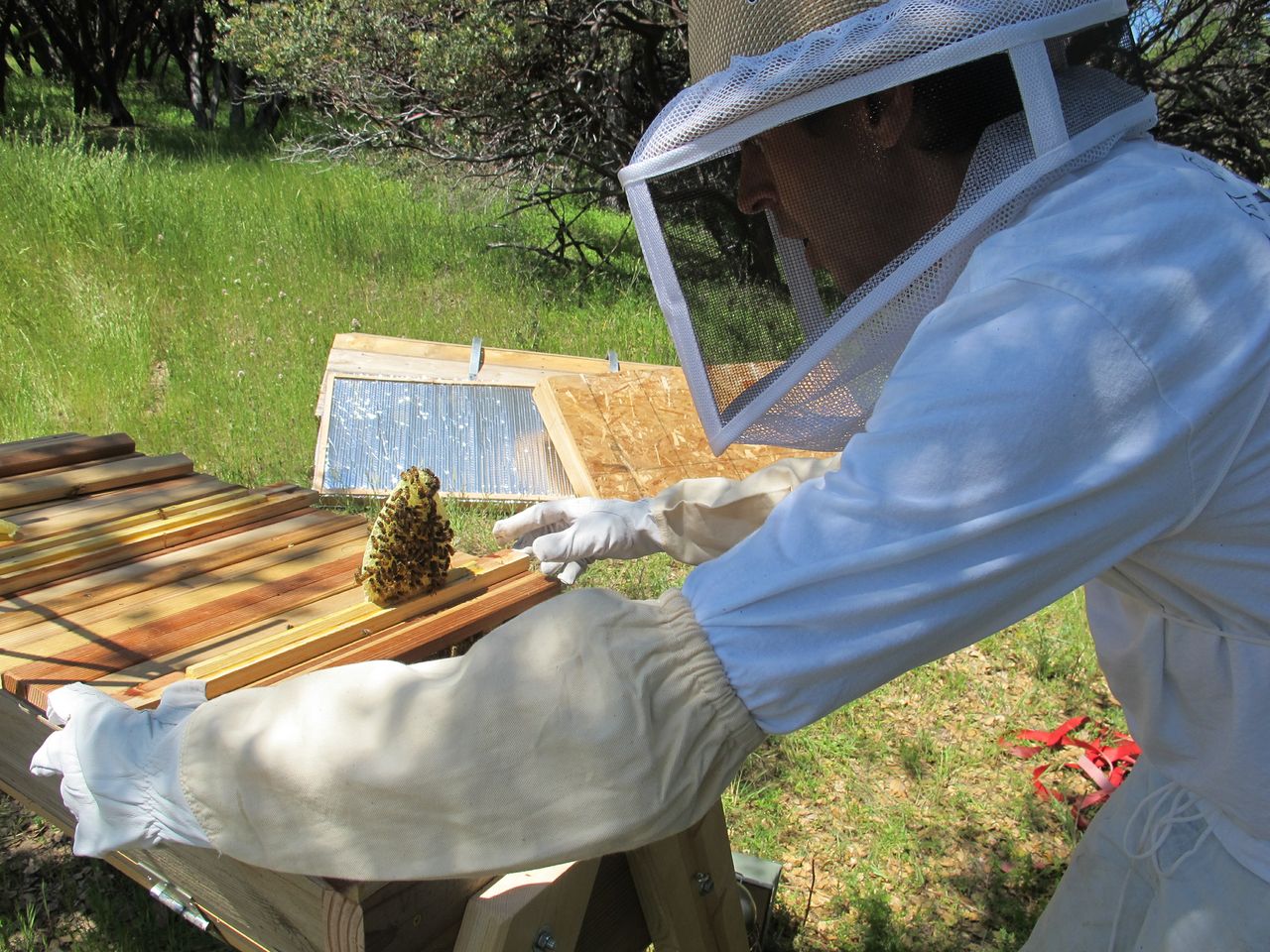 The Kenyan top bar hive has slanted sides so most of the weight is at the top and you don’t have a lot of honey and weight at the bottom. The hive encourages a sustainable growth pattern for the combs.
The Kenyan top bar hive has slanted sides so most of the weight is at the top and you don’t have a lot of honey and weight at the bottom. The hive encourages a sustainable growth pattern for the combs.
“These hives have no frame around the comb and that means the comb is hanging with no support from the bottom. On a really hot day it could just sag and break and fall to the bottom.”
Mendonca began to smoke the bees in order to subdue them while he checked the hive.
“Bees communicate by pheromones and chemicals and when you smoke them they all become individuals who lose touch with the alarm pheromones and then don’t have the guard bees to freak them out.
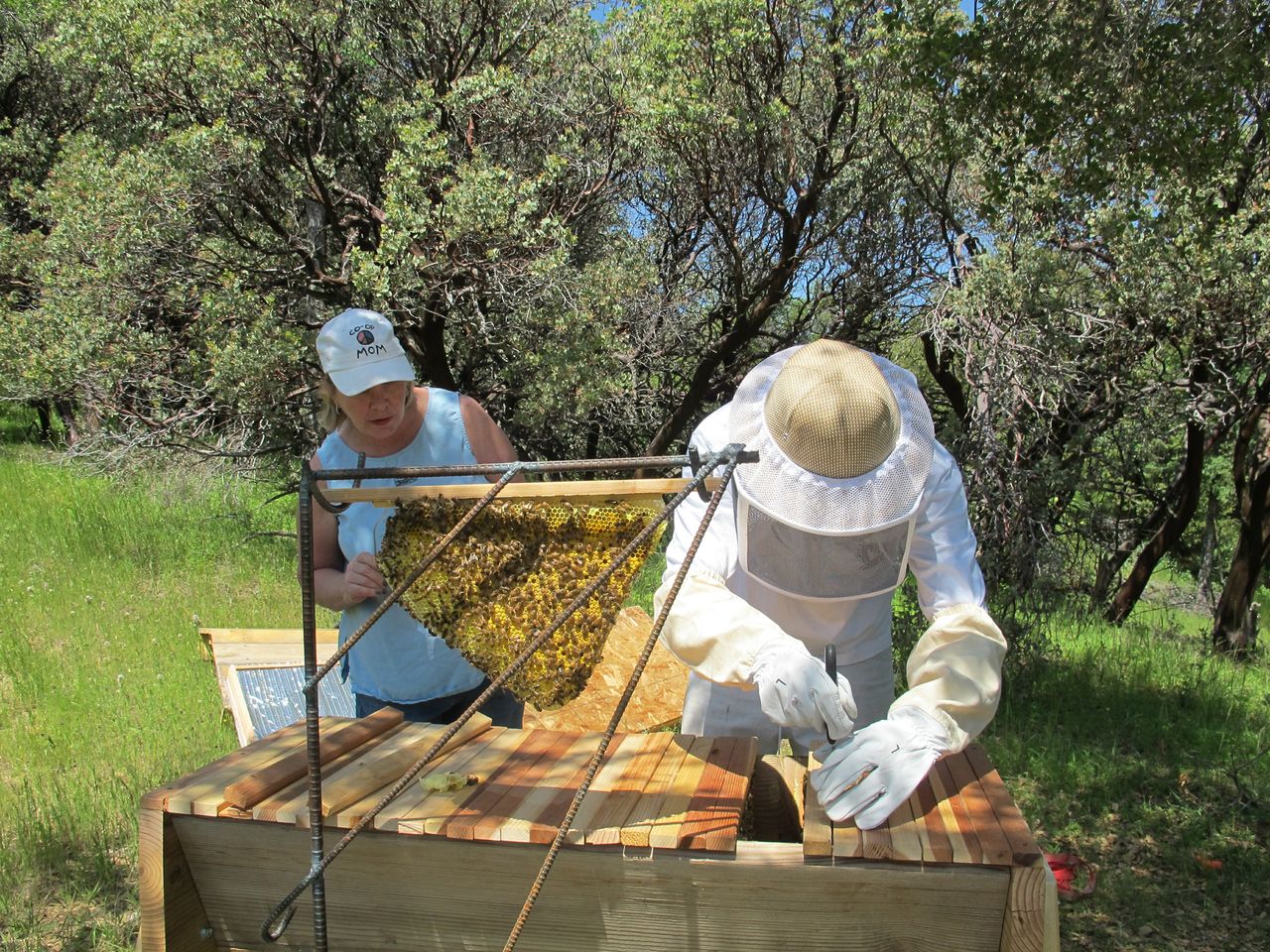 “For years I heard that when you smoke bees they think that their hive is on fire so they start eating the honey,” he continues. “They actually do eat the honey – after smoking, wait a minute or two and when you open the hive they’re all clustered around the honey stores feeding like crazy, thinking ‘well, if my hive is going to go I need to start eating this honey to transport it to where ever we’re going.'”
“For years I heard that when you smoke bees they think that their hive is on fire so they start eating the honey,” he continues. “They actually do eat the honey – after smoking, wait a minute or two and when you open the hive they’re all clustered around the honey stores feeding like crazy, thinking ‘well, if my hive is going to go I need to start eating this honey to transport it to where ever we’re going.'”
Brood is what beekeepers call the babies.
“First they lay eggs and it’s an egg for three days, and then it hatches into a larvae and it’s a larvae until the 9th day. Then they cap it and metamorphosis takes place, and that’s when a larvae turns into the pupa stage, and then turns into a bee while there’s a cap over the cell.
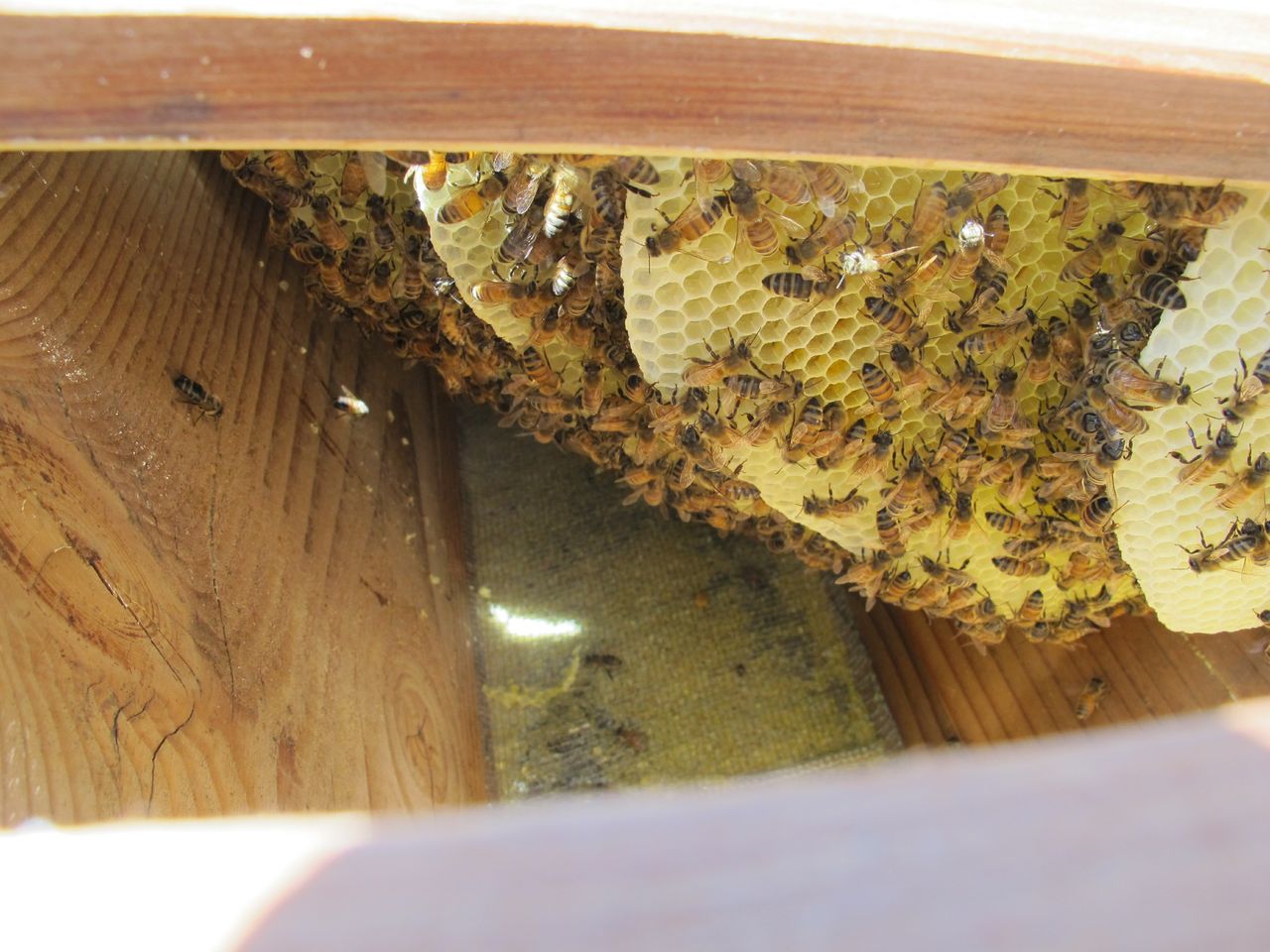 “When the bee is fully formed in about 21 days it chews its way out of the cap, and that’s the brand new bee. It has much more hair on it, and it’s furry and it runs around being a nurse bee to the larvae and cleaning the hive for the first few weeks.”
“When the bee is fully formed in about 21 days it chews its way out of the cap, and that’s the brand new bee. It has much more hair on it, and it’s furry and it runs around being a nurse bee to the larvae and cleaning the hive for the first few weeks.”
Mendonca explains the concept of “bee space.”
“Bee space is the space between the combs. If you make bee space too large they build bridge and burr comb which becomes a mess, and if you make it too small they don’t like it, either. So there are very specific dimensions involved, and that’s called bee space.
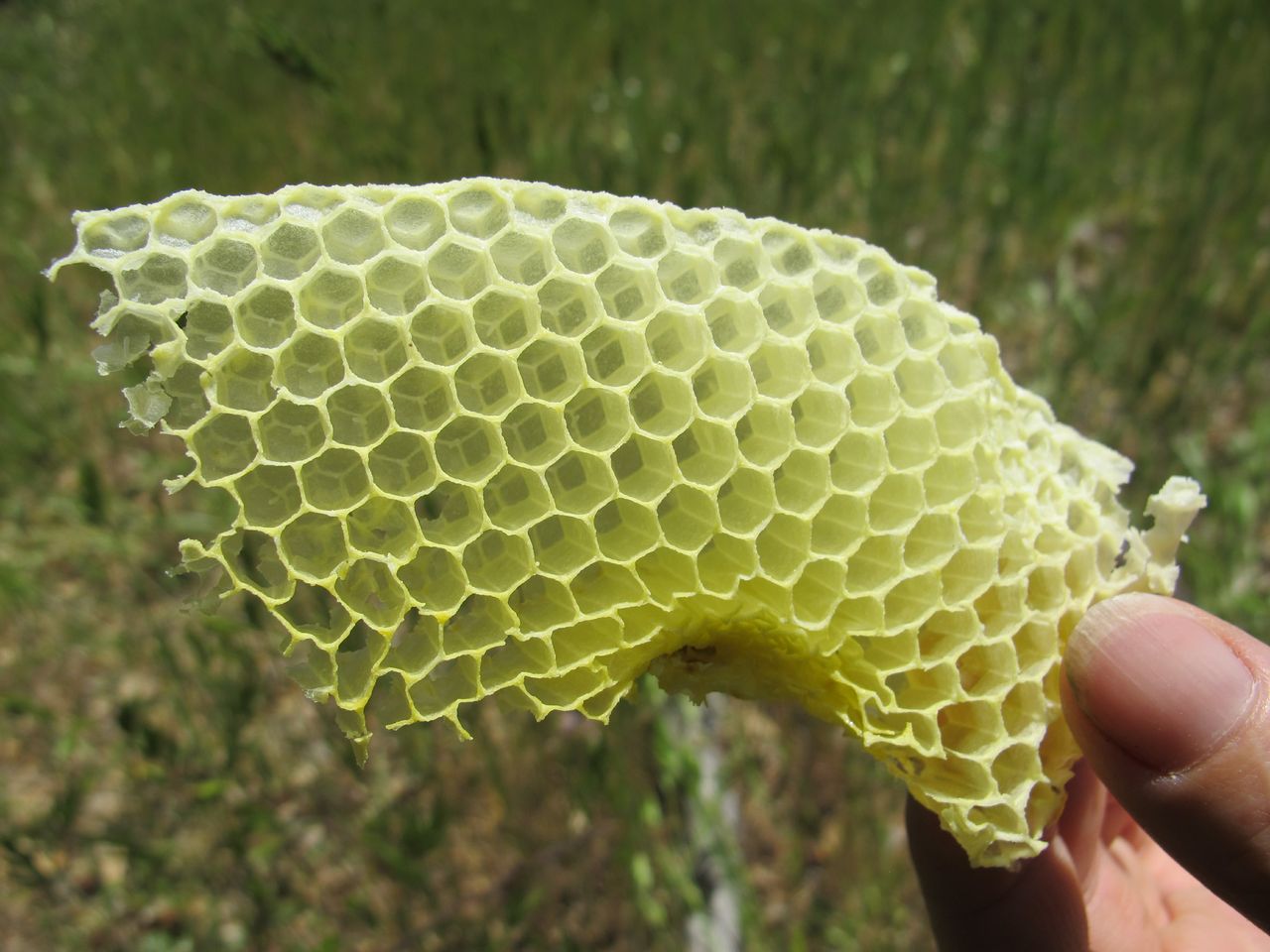 “Back when they started industrializing bees for commercial purposes, they decided, ‘Hey, if we force them to have larger cells, we’re going to get a larger bee and larger bees will bring more honey.'”
“Back when they started industrializing bees for commercial purposes, they decided, ‘Hey, if we force them to have larger cells, we’re going to get a larger bee and larger bees will bring more honey.'”
Industrial bee-keepers cranked up the size of bees 150%, leaving some people to wonder if this human interference has any influence on colony collapse disorder and other deadly challenges that bees face today.
“Some say no, but others are having great success with their regressed ‘small-cell’ bees, most likely related to their smaller size. I say let them do their natural thing.”
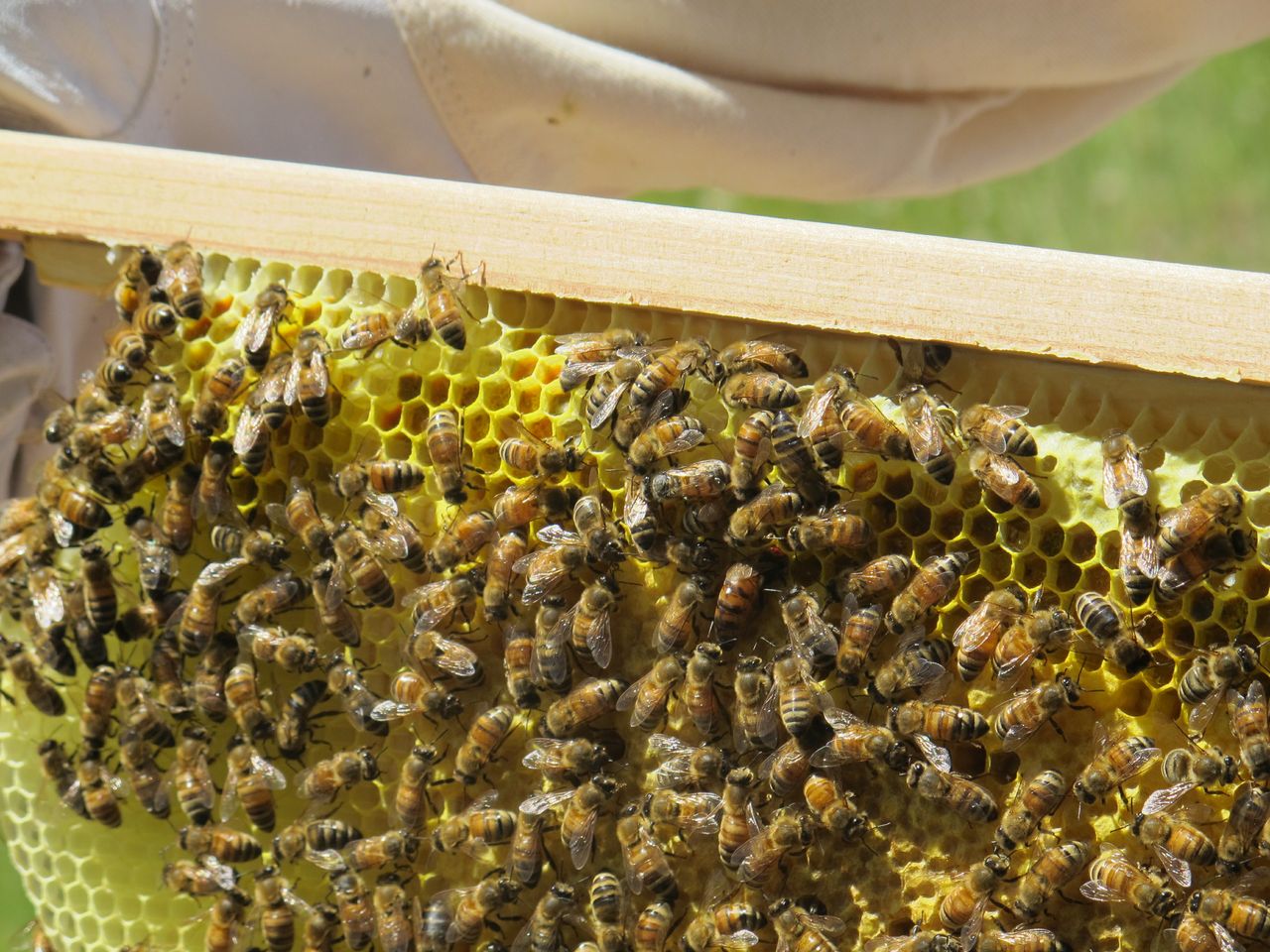
Mendonca looks through comb after comb searching for the elusive queen bee. She arrived with his order already marked with a red dot, and is considerably larger than the other bees. “She’s busy laying eggs on another comb.”
A queen mates once with between five and fifteen males; they do so while flying in the air.
“She stores the sperm in a spermatheca, a small organ on the queen’s body. For the rest of her life she lays eggs and deals out the sperm to each egg to make workers, those are the fertile eggs. When she wants to make a male she holds back on the sperm and just lets an egg fly.”
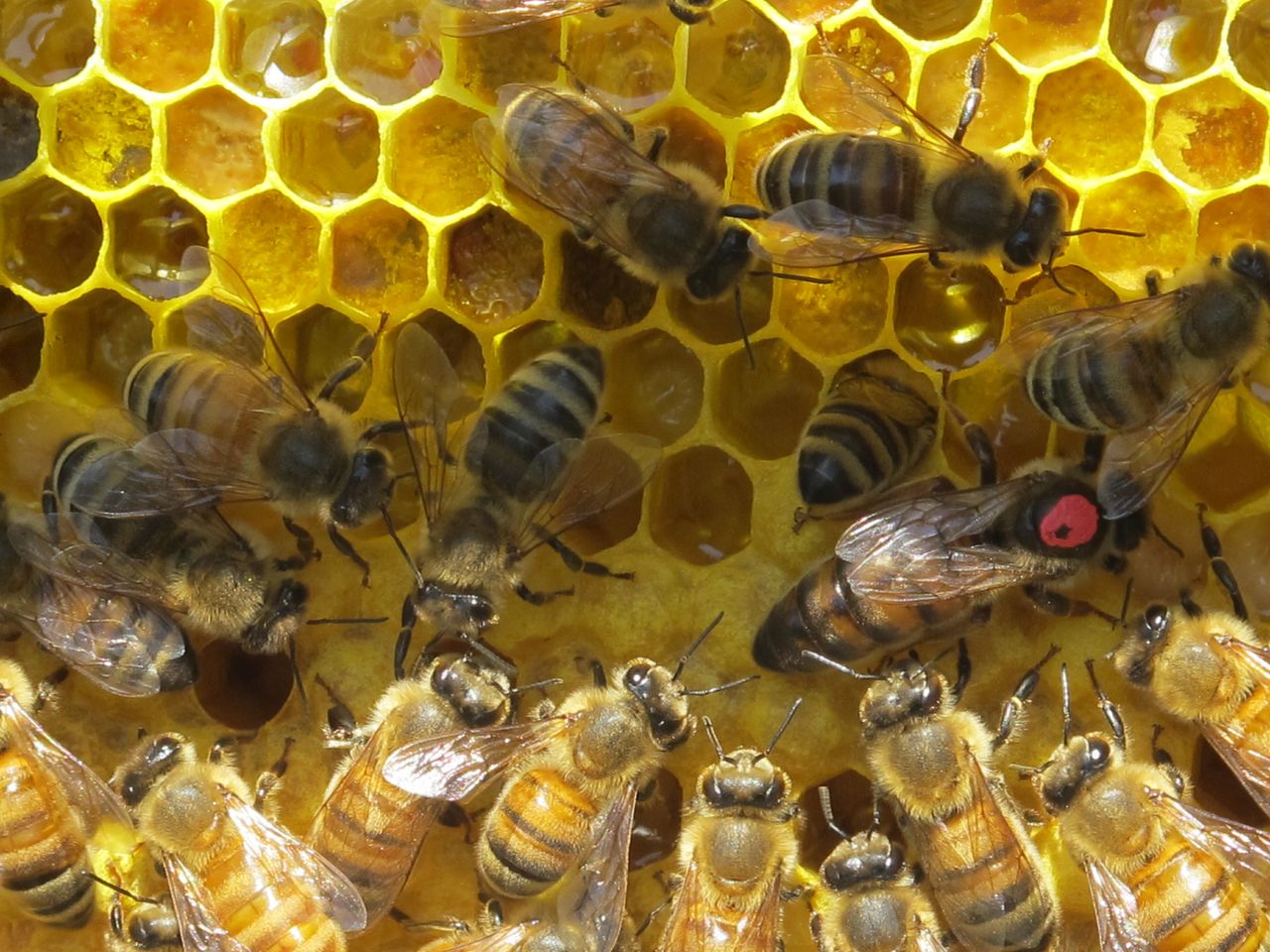 These bees are making their home in just half of Mendonca’s hand-made top bar hive. He plans to remove a divider and make space for the growing hive as it doubles in size.
These bees are making their home in just half of Mendonca’s hand-made top bar hive. He plans to remove a divider and make space for the growing hive as it doubles in size.
“The first comb they built was the farthest from the opening, and the largest. They got smaller from there. If you don’t open these bars up for weeks, they can completely veer off the top bars. Then you can’t move anything, you just have to cut it all away and destroy it in order to get it back to normal.”
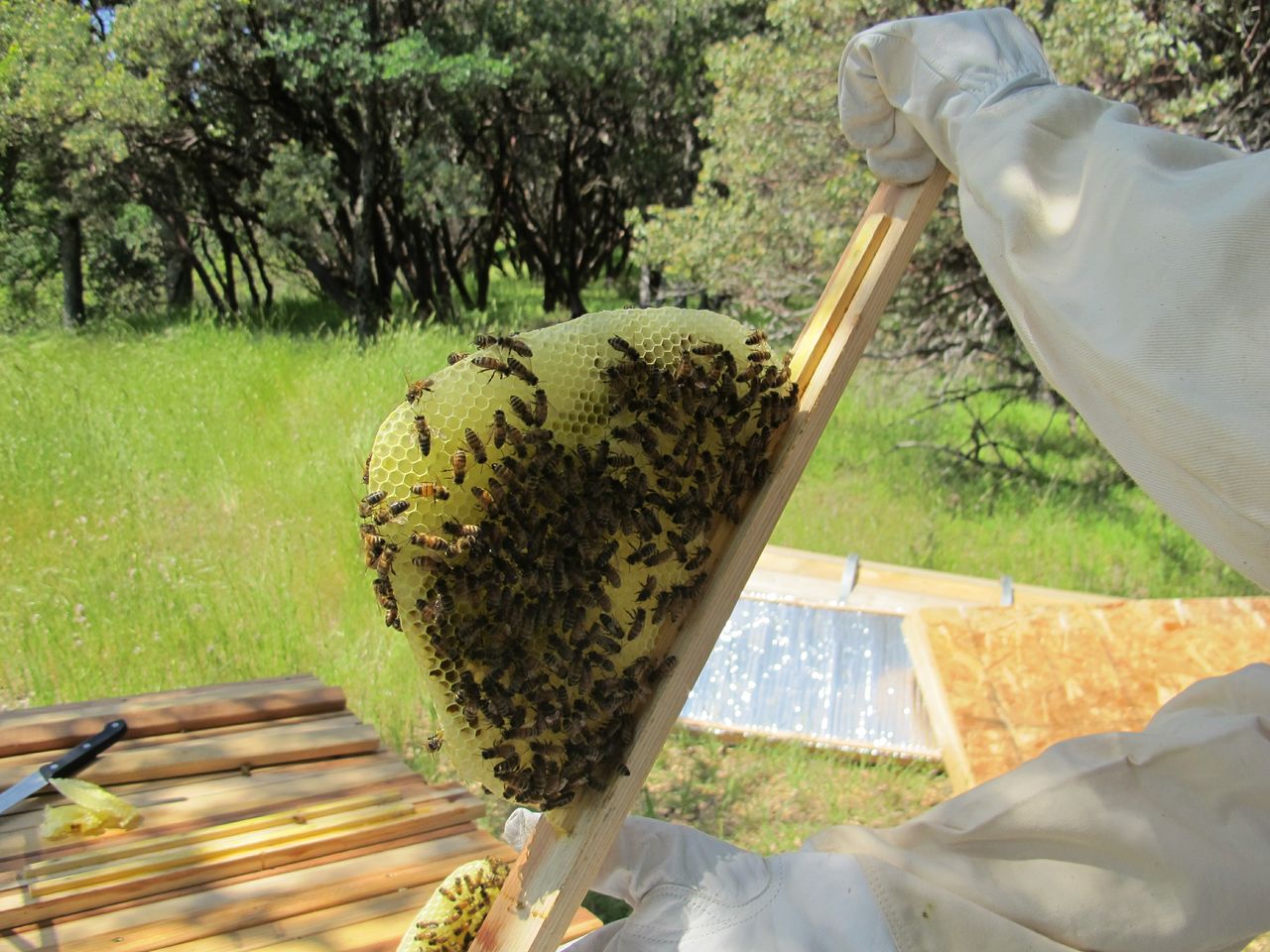 The efforts of “back yard” bee keepers like Mendonca do not benefit his hive or family alone. Other gardens and other crops nearby will reap the rewards of these bees, too.
The efforts of “back yard” bee keepers like Mendonca do not benefit his hive or family alone. Other gardens and other crops nearby will reap the rewards of these bees, too.
“Today in the United States there are approximately 2.5 million colonies of bees. Fully 1.5 million are trucked to California for the almond bloom alone. It’s astounding. They are industrialized pollinators.”
Many of today’s “local” bees are part time residents in California, shipped in boxes on pallets, moved with forklifts and trucked in from Texas and Florida. Placed around almond orchards for weeks, bees get paid for pollination services, usually about $100 – 150 per hive.
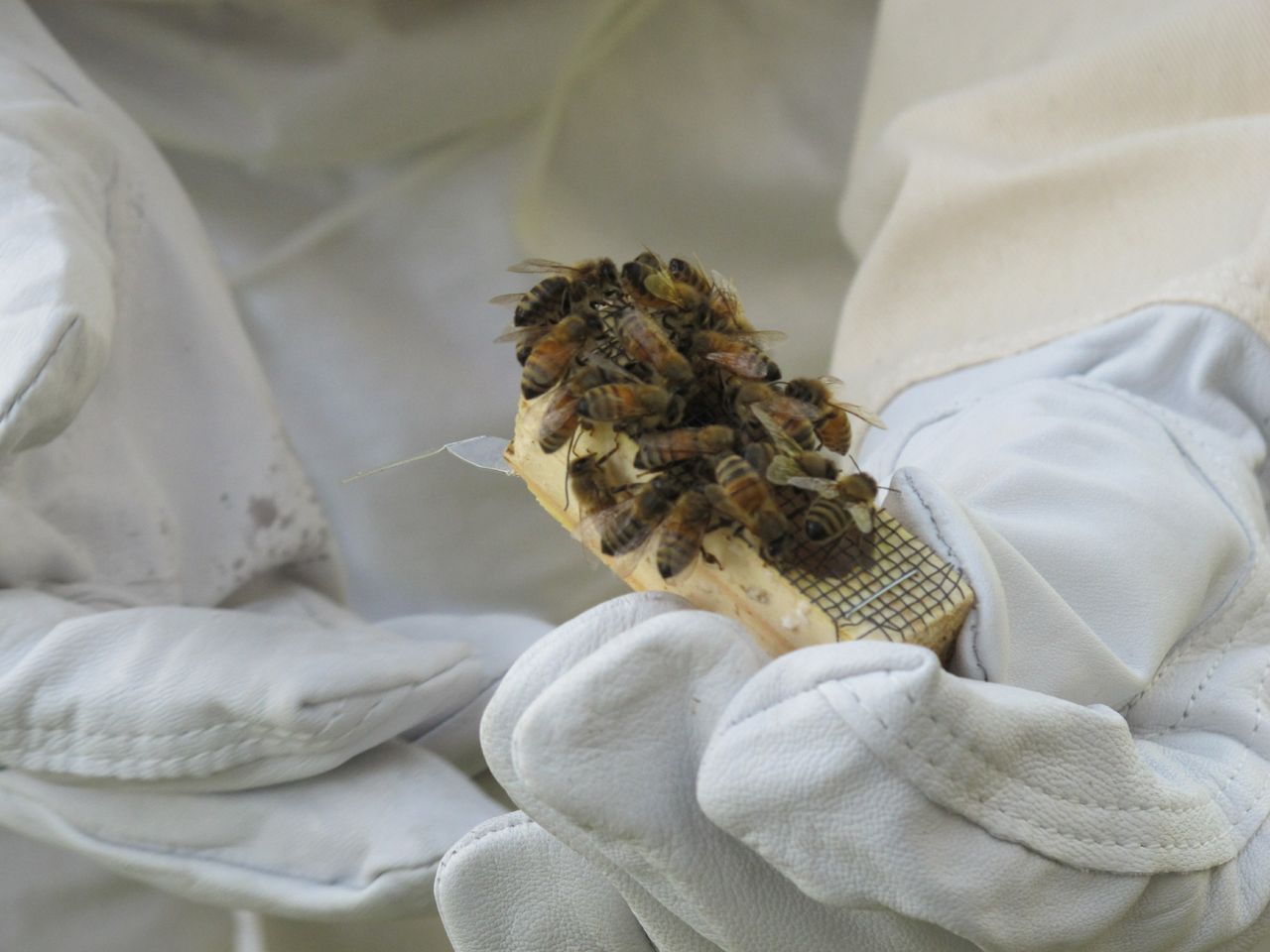 “There are several crops like that, only pollinated by propagators,” Mendonca says, “and they’re only going to produce if there are pollinators, and this is why this bee collapse is freaking people out.
“There are several crops like that, only pollinated by propagators,” Mendonca says, “and they’re only going to produce if there are pollinators, and this is why this bee collapse is freaking people out.
“Not just the commercial growers are concerned, but everybody, because cucumbers, pumpkins, squash… they are all ground growing crops that are only going to grow with pollinators.
“Your garden and my garden, should be better now that I’ve got bees, and anybody’s garden within a two mile radius should also get better if the bees are hitting them, too.”
Next up: Mendonca battles the effects of California Buckeye. Will the bees survive?

